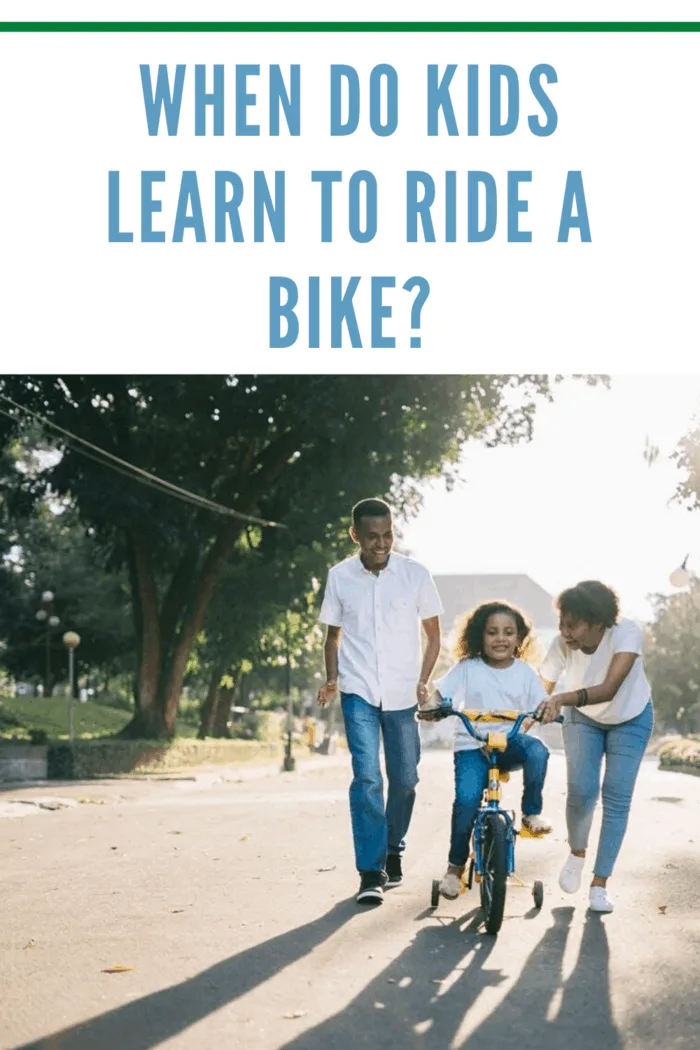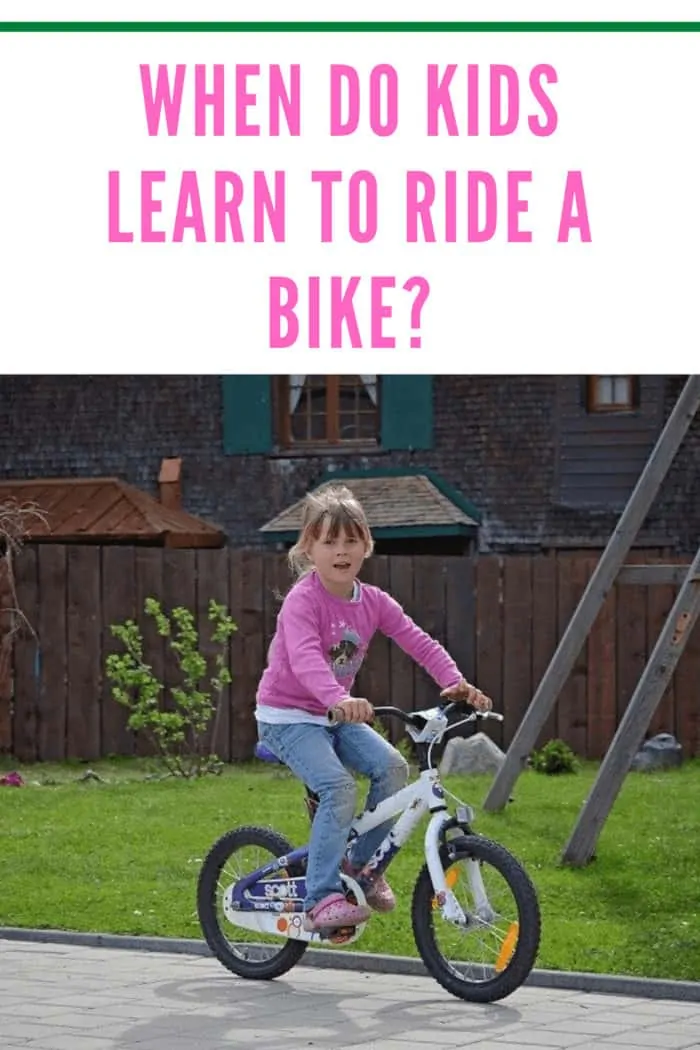Pedal-powered milestones: Exploring when kids learn to ride a bike, from shaky starts to confident spins. A shared adventure in every family’s memory lane!
Riding a bike can be a scary experience for a parent, even when the child is excited to do it. Conscientious parents will be wondering when most kids learn to ride a bike to try and determine if their child is ready. When do you start encouraging them to tackle this challenge?
Thankfully, there are plenty of resources available to figure out when kids learn how to ride a bike and this guide will lead you through the important points.
This includes how you know when your child is ready when most kids learn to ride a bike and what things can change the timeline so you can better prepare to put on your coaching hat and tackle this thing with your kid.
Let’s do a little age review.

When Do Kids Learn to Ride a Bike?
Before 5 years old
Before your child is 5, they will not fully develop motor skills.
This is why tricycles or small bikes with permanent training wheels are the ideal choices.
These are things they can ride around on their own without your help.
This isn’t the kind of bike we’re talking about, of course.
The question is: when do kids start learning how to ride a two-wheel bicycle?
Ages 6 to 12
At age 6, most kids learn to ride a real bike.
They’re ready at that point because they’ve fully developed the motor skills required to keep a two-wheel bike balanced.
They also have enough strength in their hands to work handle brakes.
That’s why aside from bikes, scooters are also commonly enjoyed by kids at this age.
The market offers a lot of scooters ideal for 6-year-old kids, so just remember to pick something that’s not for older children.
Though you’re asking when most kids learn to ride a bike, there’s no one answer.
Your kid might be more nervous than average and take a little longer to get their confidence.
Around 9, most kids are old enough to switch to bikes with multiple speeds and gears.
Again though, every child is different.
Once you know what they’re ready for, you shouldn’t have trouble finding something that suits their needs.

When to get started
You need to notice some of the signs that your kid is going to want to start learning how to ride a bike.
When you do, you can be prepared for what kind of bike to get, what kind of teaching they’re going to need, and what you should do about it.
For example, if the kid in question has an older sibling who is now learning to ride a bike without training wheels, you can almost be certain that the second child will want to ride a bike sooner than their big brother or sister.
Friendly, competitive emulation is extremely common for kids at this age, so you need to prepare.
To avoid being left out, they may insist on starting early.
Use the advice above to figure out if they’re ready for a real bike or if they should get a tricycle or scooter to start.
Just seeing other people ride bikes (even the neighbors) is enough to get some kids ready to learn for themselves.
If you have a social child who has a lot of friends and you notice that they’re riding bikes, you should be ready to get one for your child.
There’s nothing like the fear of being left out to overcome all other fears!
Safety first
One easy way to know that your kid isn’t ready to learn how to ride a bike is if you don’t know enough about it yet yourself.
These safety tips from the NHTSA should help you get started.
In general, though, you need to make sure your kid has a bicycle that fits them since bikes that are too tall for their feet to touch the ground are dangerous to ride.
You need to have the means to inflate tires and the padding that you feel is necessary based on your child’s needs, including a helmet (always) and knee and elbow pads (optional).
You also want to teach your kid about the rules of road safety while riding a bike and the importance of their helmet and padding.
Use this guide from KidsHealth to sort it all out.
Even if you’re asking when kids learn to ride a bike, looking for a specific age, you should have also asked what you needed to teach them before starting the process in the first place.
Negative influences
This also goes for being aware of the negative influences surrounding bike riding and how it might affect your child’s confidence level.
One of the main factors that influence when kids learn to ride a bike is how they feel about it.
Even though you might have done a lot of preparation, you may not be prepared for changes in your child’s attitude.
If they see someone crash, for instance, they may not feel as safe.
They’re already worried about falling, so you need to address a situation like that by either being more supportive when they’re on the bike (you can keep your hand on the seat so they feel safe) or knowing that it’s time to give it a rest.
As nice as it is to push kids to do better and learn to ride a bike, pushing too hard, especially when they’ve become scared, can turn a learning opportunity into a small family crisis.
The Takeaway
If your child is getting older and they still haven’t shown an interest in bike riding, you may be worried that they’re missing out.
This guide to when most kids learn to ride a bike should help you sort out those feelings and gauge where your child is in terms of their learning, confidence level, and motor skills development.
Remember that every child is different.
In any case, there are things you can do – making sure they have the proper equipment, learning the safety procedures, adopting an encouraging attitude – to make the process easier.
Your child’s desire to ride their own bike is the main ingredient to making the experience enjoyable for them (and for you).
No specific age requirement can help you there.
